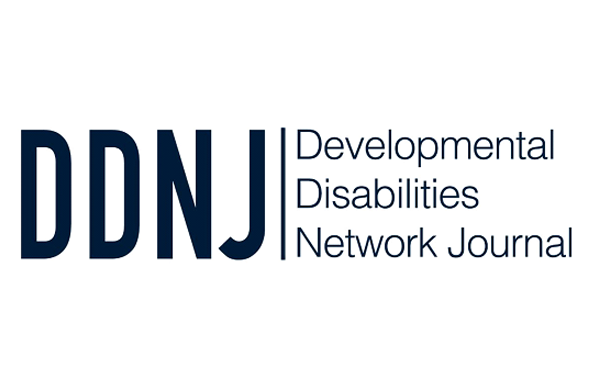The Spring 2025 Special Issue is a collaboration between DDNJ and WebAIM. This special issue will be focused on digital accessibility and the implications of the newly published final rule revising Title II of the Americans with Disabilities Act (ADA). This special issue will be dedicated to evidence-based processes and practices for entities to ensure the accessibility of digital content, information, services, programs, or activities. We are interested in all facets of this topic are of intres, welcoming solution-oriented abstracts that help put all state and local government entities on a path toward meeting the new requirements of Title II of the ADA. We need to know not only the challenges, but also solutions within the context of the lived experience of persons with disabilities, their families, and the communities in which they live.
We are specifically interested in seeing submissions on the following topics:
- The positive impact of universal design and digital accessibility of public entities’ websites and mobile apps on the educational, economic, and social well-being of individuals with disabilities across the lifespan
- Proven skills and techniques for implementing digital accessibility practices in the context of the ADA and Section 504 requirements
- Policies, procedures, and guidelines shown to facilitate the sustainability of accessible websites and mobile apps over time
- Effective professional leadership, learning, training, and technical assistance to build capacity
- Effective generation and allocation of fiscal, human, and technological resources necessary to plan, implement, sustain, and scale a digital accessibility program, including successful roadmaps and bench-marking methods.
- How data and evidence-based practices have been used to evaluate and monitor user experience and continuously improve digital accessibility practices and products, especially third-party digital products
- The inclusion of individuals with disabilities in the design and development of accessible digital content, information, services, programs, or activities
In general, we are looking for articles that demonstrate what works! We want to publish articles that have clear implications for enhancing engagement and partnerships, research, policy, and practice. Abstracts and final articles should reflect a commitment to high quality research methods and ethics.
Abstracts will be reviewed by July 29, 2024, and selected articles will be invited for full submission by August 2, 2024. Full articles will be due by October 18, 2024*.
Full articles will be reviewed again by anonymous peer reviewers, WebAIM staff, and DDNJ editors prior to publication in February 2025.
If you have questions or concerns, please contact us at [email protected].
*An invitation to submit a full article does not guarantee publication. Articles must still meet standard review criteria and must reflect the intent and focus of this special issue
Individuals with a wide range of disabilities experience barriers to using technology in education, employment, and daily living. Across the lifespan, the human condition includes physical, sensory, cognitive, and developmental variability for which many current technologies are not designed to be responsive. At the same time, society’s reliance on digital products and services is expanding at an exponential rate. As a result, many individuals with disabilities are being denied equal opportunity to participate in virtually all aspects of society. The impact of this digital exclusion begins at any age and can have cumulative repercussions on an individual’s educational, economic, and social outcomes.
Consider the following examples:
- A preschooler with low vision falls behind in cognitive and social development when an early learning program adopts digital tools that require sight for interaction.
- A middle schooler with a reading disability becomes disengaged and stigmatized when given a book at a third-grade level rather than an age-appropriate digitally accessible material.
- A high schooler who is deaf is unable to complete homework because assigned videos aren’t captioned.
- A college student with a fine motor disability has to wait weeks into the semester to receive alternative formats of course materials that work with assistive technology.
- A career seeker who is blind is unable to effectively conduct job searches due to the inaccessibility of many employers’ web-based platforms.
- A resident of a local municipality has a cognitive disability and is unable to locate the city’s online calendar of events due to the website’s lack of organizational structure.
Digital accessibility matters! In its recently published final rule revising Title II of the Americans with Disabilities Act (ADA), the Department of Justice describes digital accessibility as the “ability of individuals with disabilities to use the public entity’s web content or mobile app to access the same information, engage in the same interactions, conduct the same transactions, and otherwise participate in or benefit from the same services, programs, and activities as individuals without disabilities, in a manner that provides substantially equivalent timeliness, privacy, independence, and ease of use” (Federal Register, p. 31322).
To meet this standard of accessibility, state and local government entities’ websites and mobile apps will be required to conform to the Web Content Accessibility Guidelines (WCAG) 2.1 Level AA by either June 24, 2026, or June 24, 2027, depending on total population or if the public entity is a special district government.
Similarly, in May 2024, the U.S. Department of Health and Human Services finalized a rule updating Section 504 to define WCAG 2.1 as the technical standard for websites and mobile applications used to deliver health and human services programs and activities.
*An invitation to submit a full article does not guarantee publication. Articles must still meet standard review criteria and must reflect the intent and focus of this special issue.
Please send a concise accessible abstract of 500-750 words to [email protected] by July 19, 2024.










